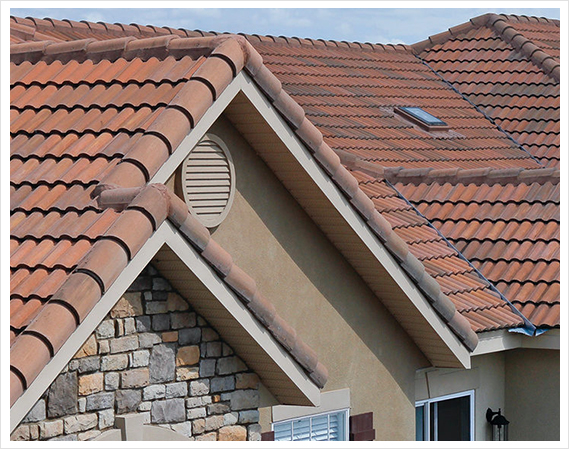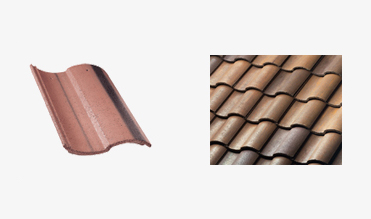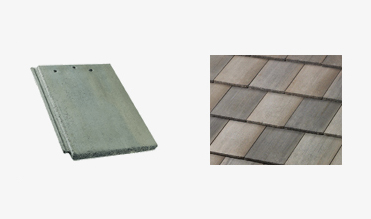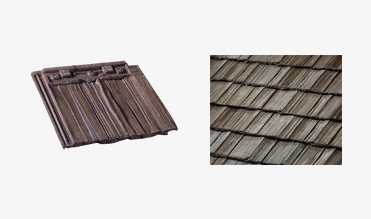Tile Roofs

Tile roofing is beautiful, but not waterproof. Tile roofing is a watershed and a decorative roof covering. The actual waterproofing is provided by the underlayment, or felt paper installed underneath the tile. Some felt is organic, but all deteriorate over time. This usually takes 12 to 20 years, depending on several factors, and then the felt must be removed and replaced (R&R).
Sooner or later all tile roofs will undergo a tile R&R. In the mid to late 1980’s there was a glut of building in the metro Phoenix area and an abundance of substandard roofing felt imported from other countries was used as a tile roof underlayment for these roofs, both on commercial and residential applications.
As a result when a 12-15 year old tile roof starts to leak the tile has likely outlived the underlayment and is often a much bigger problem than is first thought. Often, it is a telltale sign that the felt is deteriorated and ruined. Delaying the complete replacement of the felt beneath the tile will only result in ongoing frustration for the occupants, not to mention the damage to the interior contents of the building.
Tiles are available in Clay, Sandcast, and Concrete Options.
CLAY TILE
There is a wide variety of tile in many styles, finishes, and colors. Clay tile is prepared by baking clay and molding it. Density is determined by the elements (time and temperature) that it is heated. Tiles may be glazed and also may have surface texture treatments applied. Installation methods differ and are determined based on the type of tile being installed; that is, whether it is two piece, one piece, interlocking or flat.
Clay tile is most often thought of in the traditional “S” or “Spanish” style but it can now be made in several other patterns as well. Tile is a very resilient material and is able to withstand some of the harshest elements such as hail, wind, and fire.
The one drawback to tile has been its weight; they have typically been very heavy and require certain structural standards for the frame and decking of the roof. However, many manufacturers are offering an increasingly larger option of light-weight tile, reducing the need for additional structural work. Tile in general has a great life expectancy, with a duration of up to 40 or 50 years. Tile roofs offer one of the longest warranties in the roofing industry.
SAND-CAST
Sand-cast tile is very unique tile made from all natural materials, mostly clay and sand. Its most appealing quality is the uniqueness that lies in the color variances which vary from batch to batch. Sandcast tiles can be machine made or handmade. The look tends to be rustic and will go well with many architectural styles, especially Southwestern and Mediterranean-style homes. The only down fall with a sandcast roof is that it can not be walked on because of the delicate nature of the tiles.
CONCRETE TILE
Concrete tile is made with Portland cement, sand, and water, then set in molds under high pressure. Color may be added to the surface of a tile or dispersed throughout (color through). Special texture may be added in surface treatment. In addition, each tile type may have separate field, ridge, hip, gable and terminal tiles that are various shapes.
Concrete tile has essentially all of the upsides of clay tile, but with the added advantage of being available in an even greater number of styles including traditional clay, slate, and even wood shake! It is ideal for communities with appearance codes because it has such a wide range of appearance options.
CONCRETE AND CLAY TILE STYLE OPTIONS

S-TILE
Reminiscent of the Spanish roofs found on early missions in the Southwest, dramatically capturing the beautiful, rustic appearance of the Old World.

FLAT OR SLATE TILE
Representative of the roof styles found in England, northern Europe and the Eastern Seaboard. Versatile enough to accentuate any architectural style.

SHAKE TILE
Affordable, authentic replication of hand split cedar shake roof.
Concrete tile has essentially all of the upsides of clay tile, but with the added advantage of being available in an even greater number of styles including traditional clay, slate, and even wood shake! It is ideal for communities with appearance codes because it has such a wide range of appearance options.

 (800)293-0221
(800)293-0221